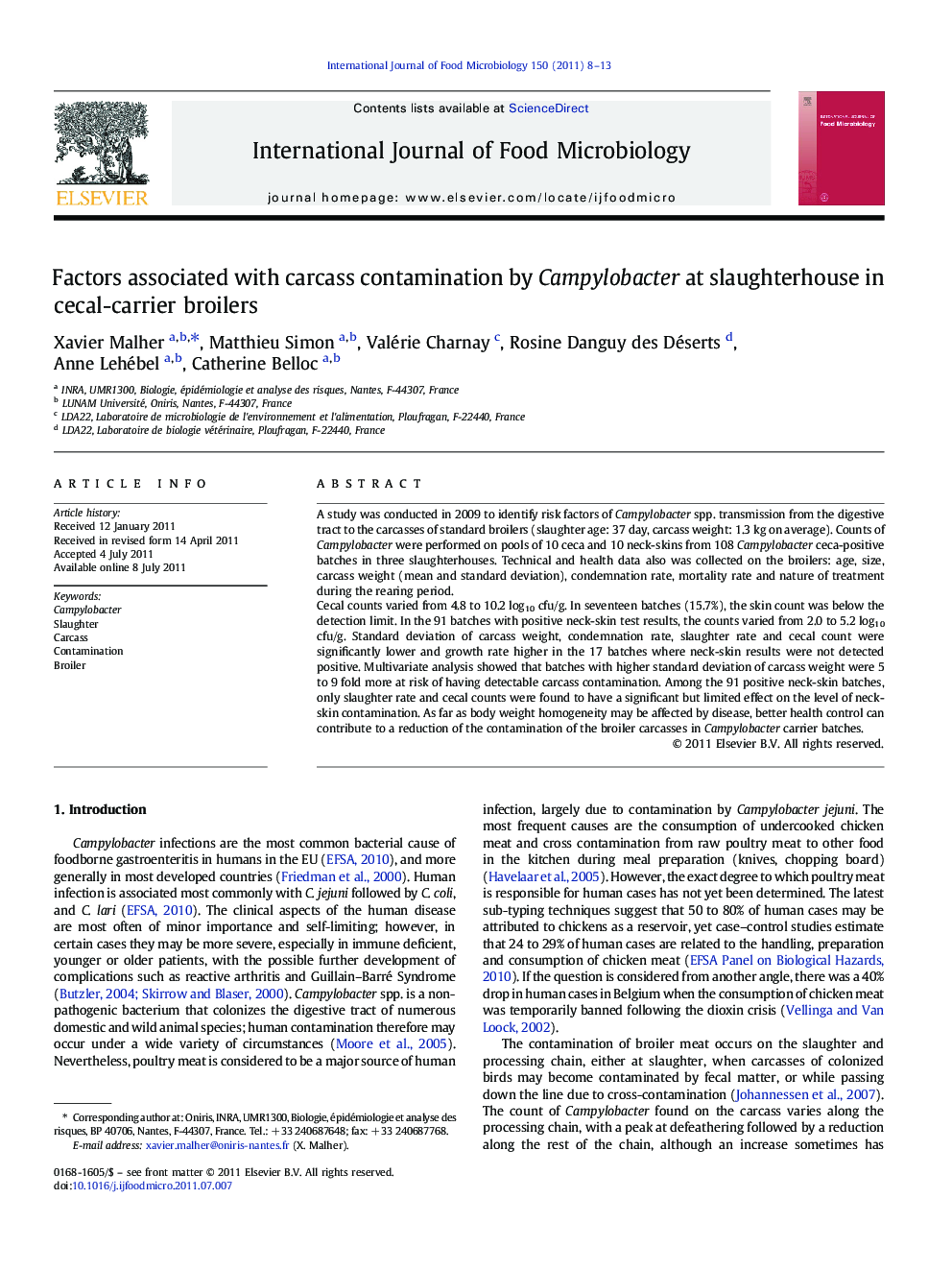| کد مقاله | کد نشریه | سال انتشار | مقاله انگلیسی | نسخه تمام متن |
|---|---|---|---|---|
| 4368145 | 1616660 | 2011 | 6 صفحه PDF | دانلود رایگان |

A study was conducted in 2009 to identify risk factors of Campylobacter spp. transmission from the digestive tract to the carcasses of standard broilers (slaughter age: 37 day, carcass weight: 1.3 kg on average). Counts of Campylobacter were performed on pools of 10 ceca and 10 neck-skins from 108 Campylobacter ceca-positive batches in three slaughterhouses. Technical and health data also was collected on the broilers: age, size, carcass weight (mean and standard deviation), condemnation rate, mortality rate and nature of treatment during the rearing period.Cecal counts varied from 4.8 to 10.2 log10 cfu/g. In seventeen batches (15.7%), the skin count was below the detection limit. In the 91 batches with positive neck-skin test results, the counts varied from 2.0 to 5.2 log10 cfu/g. Standard deviation of carcass weight, condemnation rate, slaughter rate and cecal count were significantly lower and growth rate higher in the 17 batches where neck-skin results were not detected positive. Multivariate analysis showed that batches with higher standard deviation of carcass weight were 5 to 9 fold more at risk of having detectable carcass contamination. Among the 91 positive neck-skin batches, only slaughter rate and cecal counts were found to have a significant but limited effect on the level of neck-skin contamination. As far as body weight homogeneity may be affected by disease, better health control can contribute to a reduction of the contamination of the broiler carcasses in Campylobacter carrier batches.
► Campylobacter quantification was performed in 118 pools of 10 neck skins and 10 ceca from 118 batches and 3 slaughterhouses.
► In 108 cecal carrier batches, 17 were neck skin negative.
► Batches with heterogeneous carcass weights were 5 to 9 fold more at risk of being skin positive than those with homogeneous carcass weights.
► Status and level of skin contamination were not related to previous antibiotic treatments.
► Among skin positive batches, levels of contamination of skin and ceca were poorly correlated.
Journal: International Journal of Food Microbiology - Volume 150, Issue 1, 17 October 2011, Pages 8–13